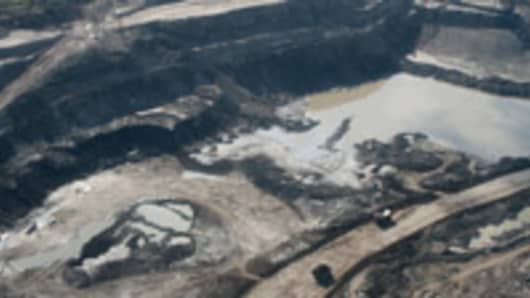In the tense debate between energy security and environmental sustainability, Canada’s vast oil sand reserves hold a special place.
Canada has the second-largest petroleum deposits after Saudi Arabia and the biggest in the Western hemisphere. Its oil sands produce 1.3 million barrels of oil a day, up from 600,000 a day in 2000. As a result, Canada has become the biggest foreign oil supplier to the United States, accounting for 19 percent of imports in 2008.
But the development of these sands in the Alberta region has also been sharply criticized by ecological groups, local communities and even Catholic bishops, for their impact on the environment, and their intensive use of both water and natural gas.
The growth in oil sands is the reason Canada has failed to contain its greenhouse gas emissions in recent years despite its commitments to do so. Critics refer to the bituminous deposits as tar sands, calling them the dirtiest fossil fuels on earth.
Trying to balance the size of Canada’s reserves and their environmental impact is a tough act. But a new report, to be released Monday by IHS CERA, an energy consulting group, sees big opportunities for the oil sands, shrouded in vast uncertainty.
“The oil sands are an immense resource in North America, and so they represent an opportunity to enhance energy security,” said James Burkhard, the managing director of IHS CERA’s global oil group. “But there are also questions about the future economic feasibility of oil sands, given the drop in oil prices, and second, there are a number of issues related to greenhouse gases, land and water use, on which there is a wide spectrum of views.”
Producing fuels from oil sands requires large amounts of natural gas and water and produces large quantities of waste material and carbon dioxide. In one process, steamed water is injected at high pressure to melt the dense, oil-bearing bitumen. In another, the sands are strip-mined and then cooked to release the oil.
Environmentalists would like President Obama to set strict limits on some of the dirtiest fuels, including heavy oil from Canada. They urge the administration to resist calls by the Canadian government to exempt oil sands from greenhouse regulations now being considered in the United States.
Canada’s oil sands industry has been hit hard by the recession and a 60 percent drop in oil prices since their peak last year. As prices tumbled, more than 70 percent of proposed heavy oil projects were postponed. But if economic growth eventually pushes up oil demand and prices rebound, the oil sand production could rise as high as 6.3 million barrels a day by 2035, according to CERA’s report. On the other hand, stringent regulation, weak economic growth or low energy prices could trim investments and result in production of as little as 2.3 million barrels a day within the next two decades, according to the report.
One of the most controversial issues related to oil sands is figuring out how much they contribute to global warming. According to CERA, which provided an analysis of 11 previous studies, producing oil sands emit 30 to 70 percent more greenhouse gases than the average oil consumed in the United States.
The CERA report points out, however, that once the total life of the fuel is considered, from the production phase to when the fuels are burned in engines — a so-called wells-to-wheels analysis — oil sands emit only 5 to 15 percent more greenhouse gases than the average fuels consumed in the country. The difference, CERA says, comes because 70 to 80 percent of total emissions come from the combustion of refined products, like gasoline and diesel, irrespective of their source.
The report recommends more research to reduce the use of natural gas in the production of oil from sands, as well as investing in technology that captures and stores carbon dioxide underground instead of emitting it into the atmosphere.
But environmental advocates point out that while Congress is looking at cutting carbon emissions in the United States 80 percent by 2050, the growing reliance on oil sands from Canada would offset some of those benefits.
“It’s not small potatoes when you stack it up against efforts to get carbon reductions,” said Matt Price, an analyst at Environmental Defence in Toronto.


